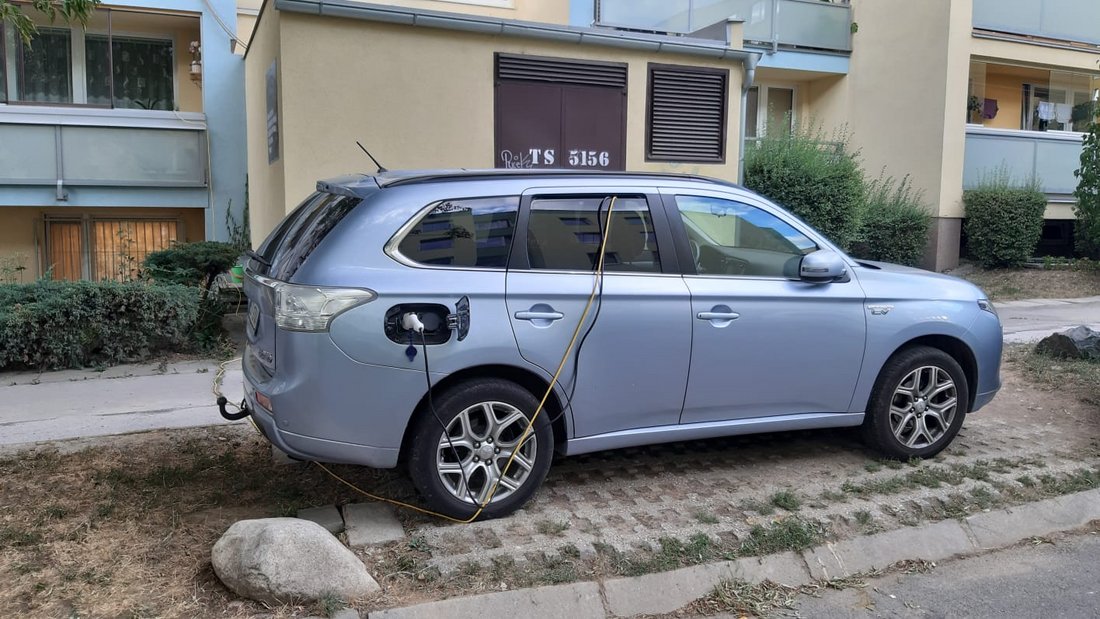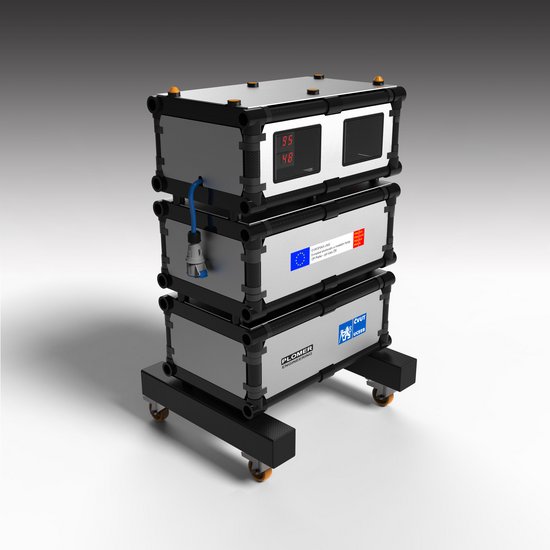Emergency charging (not only) for electric cars

Electromobility is a phenomenon of today, which is being talked about more and more, and which is intended to provide us with future mobility, which is an integral part of today’s trend and lifestyle. But is the charging infrastructure ready for the mass expansion of electric cars in passenger transport?
Electromobility in europe
Firstly, it should be noted that the current situation in electromobility varies significantly from one EU country to another. For example, Norway, one of the pioneers of electromobility, thanks to the long-term financial motivation of the population to buy an electric car instead of a car with an internal combustion engine, has valuable operational knowledge. It is advisable to learn from it and not repeat the same mistakes in the Czech Republic. One of the main shortcomings of current electromobility is the undersized charging infrastructure, especially in areas such as high-density urban settlements. The following picture shows, with a bit of exaggeration, what it might look like in these places at some point in the future.

Although the expansion of electric cars in the Czech Republic is still far from such as in Norway, it is already possible to occasionally encounter situations in the housing estates in Czech cities. As evidenced by the following picture taken in Chodov in Prague, a single-phase cable leads from the x-th floor of a block of flats to an electric car or plug-in hybrid.

Was wird in 2 bis 3 Jahren passieren, wenn die Elektromobilität in der Tschechischen Republik deutlich zunehmen wird? Wird es wie in Norwegen aussehen? Die Sicherstellung einer ausreichenden Anzahl von öffentlichen Ladestationen ist entscheidend für die Nachhaltigkeit der Elektromobilität, denn sie ist einer der entscheidenden Parameter dafür, ob mehr tschechische Autofahrer den Weg zu reinen Elektrofahrzeugen finden werden. Nicht jeder wird die Möglichkeit haben, sein Auto über Nacht zu Hause in der Garage oder tagsüber am Arbeitsplatz zu laden.

Charging infrastructure
At present, considerable funds are being invested in the network of stationary charging stations, even in the Czech Republic, and the use of a street lighting network is also being considered. Despite the gradual expansion of charging options, their number will probably still be insufficient in the coming years. It is, therefore, necessary to find other alternative options for emergency charging of electric vehicles, for example for situations where the vehicle does not reach the stationary charger or needs to recharge several kWh at night in the parking lot in order to reach the stationary fast-charging station in the morning. Current knowledge and experience, especially from abroad, show that emergency mobile charging will be necessary, for example in the form of service for owners and operators of electric cars.
And it is precisely such situations that the new product of the modular backup battery energy storage, primarily intended for electromobility and energy, is aimed at. It is easily transportable battery storage, whose total capacity in kWh is determined by the number of individual modules on top of each other, and at the same time it can be placed, for example, indoors or outdoors as a backup source of energy (for example on construction sites inside a vehicle case of emergency charging in situations where the electric car, e.g. with regard to unfavorable operating conditions, does not reach a stationary charging station, etc.).
Second-Life-Batteries in practice: Portable battery storage for emergency charging
The company nano power a.s., which participates in the commercialization and launch of a modular battery backup storage, aims to use primarily battery modules in this facility, which are discarded from their customers in the field of public transport (especially electric buses and trolleybuses). As a result, these batteries can be given a “second chance” for secondary life and their further use. Lower values of maximum currents and slightly reduced total capacity in kWh represent almost no limitation for this application. At the same time, from an economic point of view, this secondary use represents a significant market potential. The development of the equipment took place in cooperation between the CTU University Center (www.uceeb.cz) and PLOMER Engineering. (www.plomer-engineering.cz)
We are convinced that this device will support the growing market for electric cars and the ecological mode of transport in the coming years. The backup power source, located for example in rest areas, car parks at petrol stations, or in a service vehicle, will currently eliminate a significant obstacle to the use of electric cars – a very variable range depending on operating conditions, which cannot always be correctly estimated and predicted. A secondary positive impact of the project on the environment is the reduction of CO2 emissions from exhaust gases by promoting the use of electric cars for road transport.
These emergencies, with insufficient energy capacity to reach the destination of the route, are already occurring and with the further expansion of electric cars, these situations will be much more common. The aim is thus primarily to enable the stationary electric car to sufficiently charge the batteries within 5-10 minutes and the necessary short connection to the stationary charging station.
Possibilities of using an emergency charging device
It is assumed that the emergency charging device will be offered as part of a pilot project in Prague and the immediate vicinity, where significant development of electromobility is expected in the coming years. In the case of installation in a service vehicle (e.g. electric supplies), ecological transport in Prague will be supported, comfort and services for electric car users will be increased, and at the same time, the negative impacts on the environment of the capital will be reduced. Concurrently it will be possible to install the final product on a trailer, in case of demand, and thus easily transport it to places where a backup power source will be needed.
In the future, emergency recharging could also become an integral part of liability services, similar to the assistance services offered to cars with conventional propulsion. It will be mainly about improving the viability of electromobility in real conditions not only in cities but also outside them. Although the development of electromobility is inevitable in the coming years, thanks to the massive support from Brussels, only practical experience from the operation on a larger scale will verify its long-term sustainability and meaningfulness.
